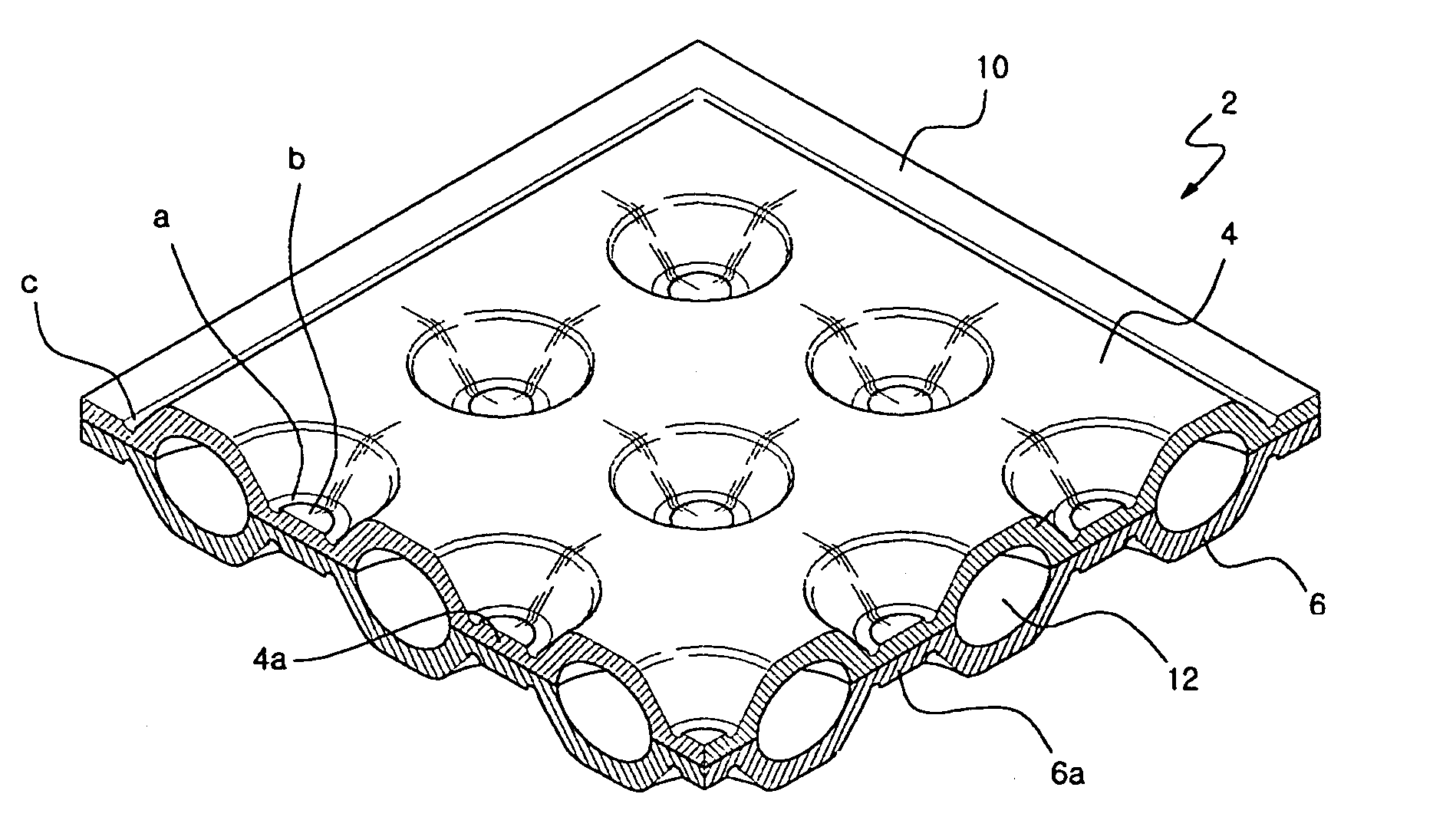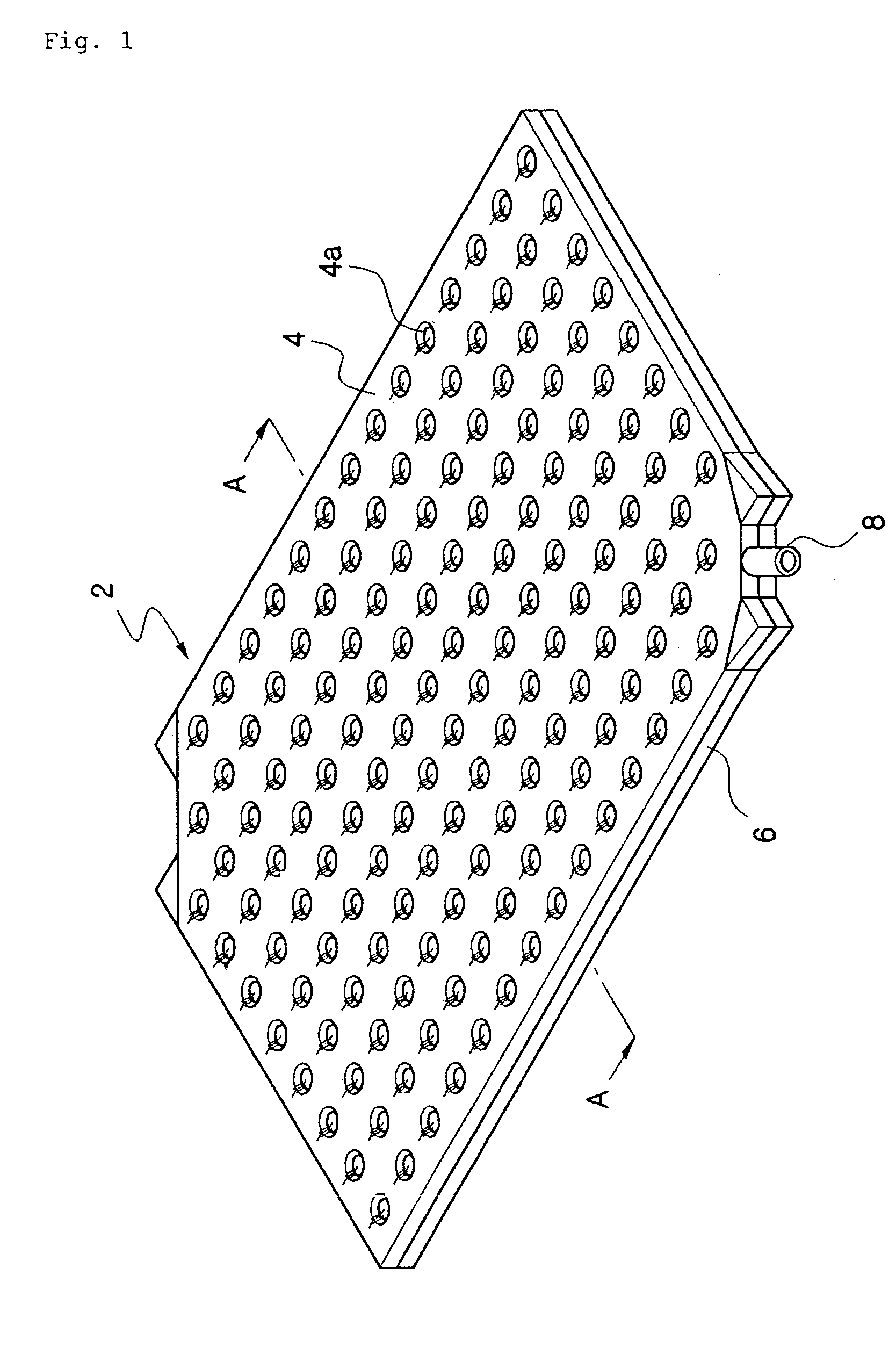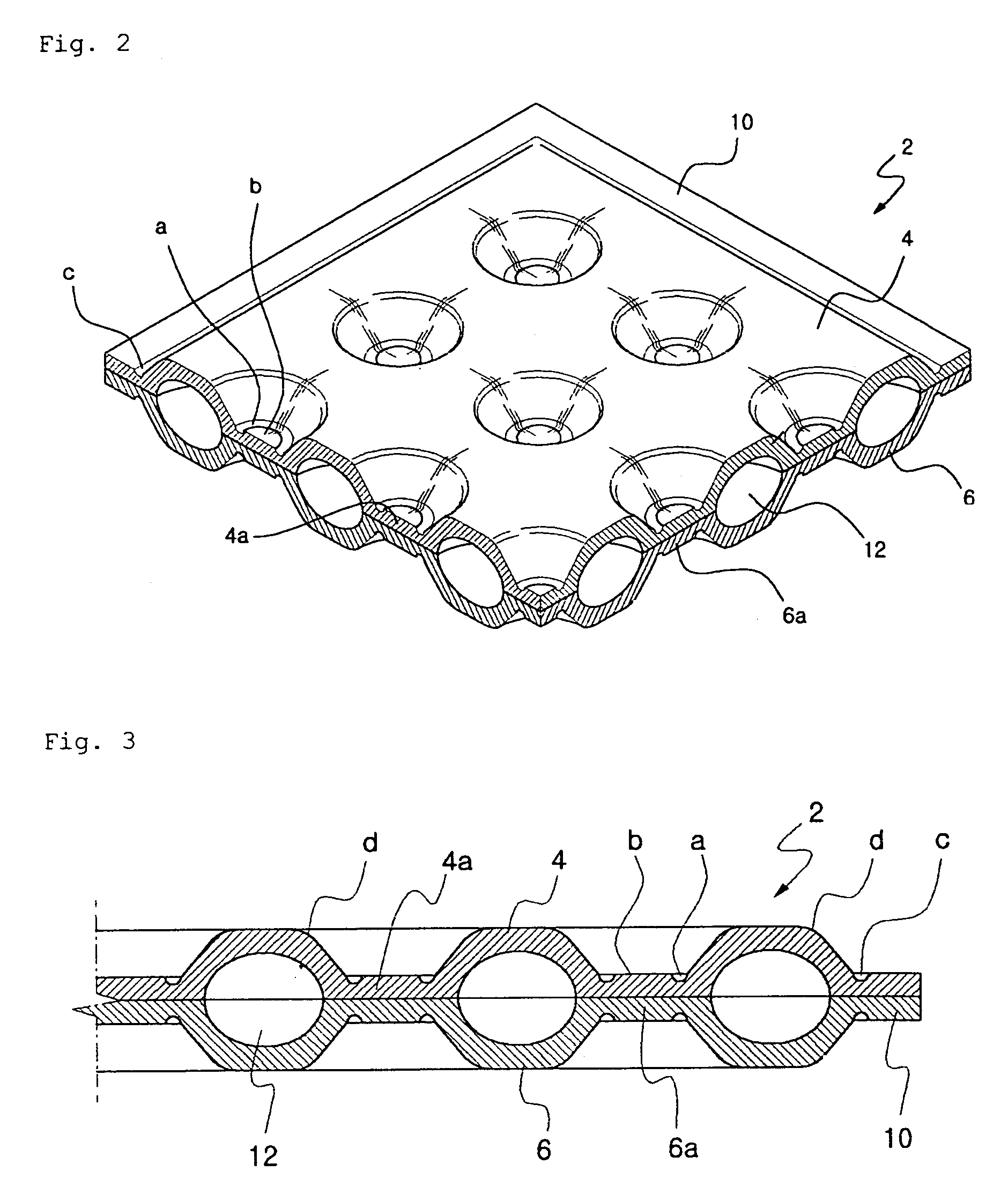Plate-shaped heating panel in which connecting members are fastened by bolts and nuts
a technology of connecting members and plates, applied in the field of plate-shaped heating panels, can solve the problems of increasing overhaul costs, affecting the efficiency of heating panels, and prolonging construction time, so as to reduce fuel costs, eliminate complicated piping work, and high heating efficiency
- Summary
- Abstract
- Description
- Claims
- Application Information
AI Technical Summary
Benefits of technology
Problems solved by technology
Method used
Image
Examples
Embodiment Construction
[0021]Preferred embodiments of the present invention will be described in detail with reference to the drawings.
[0022]FIG. 1 is a perspective view illustrating a plate-shaped heating panel according to one embodiment of the present invention, and FIG. 2 is an enlarged cut-away view of FIG. 1. A heating panel 2 of the present invention comprises upper and lower plates 4 and 6 integrally formed to face each other, forming an inner fluid pathway 12 in which heating fluid flows. In order to allow easy manufacturing and forming, the heating panel 2 is made of a thermoplastic material, and has a flat plate shape in order to maximize surface contact with the floor (it is also applicable to a wall or a ceiling) of a room such that the heating fluid may contact the floor of the room over a larger area.
[0023]As shown in FIG. 1, the heating panel 2 has a rectangular structure with a pair of long sides and a pair of short sides. However, for easier continuous arrangement of the heating panels i...
PUM
| Property | Measurement | Unit |
|---|---|---|
| pressure resistance | aaaaa | aaaaa |
| heating efficiency | aaaaa | aaaaa |
| temperature | aaaaa | aaaaa |
Abstract
Description
Claims
Application Information
 Login to View More
Login to View More - R&D
- Intellectual Property
- Life Sciences
- Materials
- Tech Scout
- Unparalleled Data Quality
- Higher Quality Content
- 60% Fewer Hallucinations
Browse by: Latest US Patents, China's latest patents, Technical Efficacy Thesaurus, Application Domain, Technology Topic, Popular Technical Reports.
© 2025 PatSnap. All rights reserved.Legal|Privacy policy|Modern Slavery Act Transparency Statement|Sitemap|About US| Contact US: help@patsnap.com



